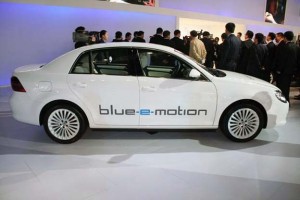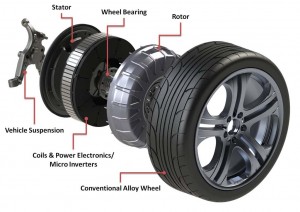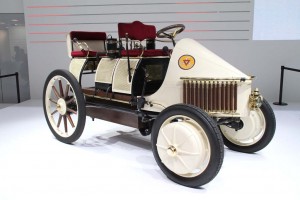Volkswagen is teaming up with Protean Electric, a promising battery-car technology supplier, to test a new system that could dramatically alter the way vehicles are designed and built.
The German maker is testing Protean’s hub motor technology on its Bora sedan, the Chinese version of the VW Jetta. The project could lead to a production model in the next few years, though the partners aren’t currently revealing specific plans.
One of the potential benefits of electric propulsion is that the space under a car’s hood can be freed up, a vehicle’s motor – or motors – moved to other locations, such as replacing the traditional center differential. Protean’s approach is to move the motors to inside a vehicle’s wheels.
Not only does that save space, but it allows engineers to come up with all sorts of creative ways to direct torque, for example, to replace conventional anti-lock brake systems, or to shift power from one wheel to another to help steer through tight turns.
“This is a two-phase project that will capitalize on the torque and packaging freedoms that Protean Drive can bring to an automaker,” explained Kwok-yin Chan, CEO of Protean Holdings Corp. “Our technology will return the space to the new Bora vehicle platform that was formerly occupied by an in-board motor and powertrain.”
(VW’s top U.S. executive leaving his post. Click Here for the story.)
Protean earlier this year announced preliminary plans that would apply its technology in commercial vehicle applications, but this is the first time it has publicly discussed a project that could lead to the use of its hub motors in a passenger vehicle.
According to the partners, they’ve been working on basic research and development for several months and hope to have the testing phase done within a year. What might happen next remains to be seen, but the decision to use the Bora for the program suggests Volkswagen wants to see if the hub motor concept could be adapted to one of its mainstream offerings.
The decision to test the technology in China, meanwhile, is little surprise. Struggling to deal with its worsening air pollution problem, Chinese regulators have been pressing auto manufacturers to ramp up production of electric vehicles.
(VW expected to make decision on production of CrossBlue before year-end. Click Here for more.)
There are some potential drawbacks to the use of hub motors, including the added unsprung weight. But Protean claims to be using super-light material to minimize mass to around 75 pounds per motor. Meanwhile, it says it can deliver as much as 75 kilowatts, or 100 horsepower, of peak torque to each wheel. In a sports car design using four of the hub motors, that would yield numbers not far off from the likes of a Porsche 911 4S, with all-wheel-drive, for example.
Perhaps not so coincidentally, Volkswagen has a long history with the hub motor concept – or more precisely, its Porsche brand has.
Founder Ferdinand Porsche used them on his very first vehicle, developed for Austrian maker Lohner. The Lohner-Porsche Mixte Hybrid, also known as the Electromobile, could be ordered with either two or four hub motors, making a maximum of 14 hp. It was produced from 1900 to 1905.
Protean claims to be working with a number of different manufacturers but Volkswagen is the first to go public with its hub motor R&D program.




As Porsche illustrated, this is not a new concept. Finding new ways to cost effectively used wheel mounted motors and microprocessors to control them could be a good thing but you significantly increase the complexity when you use a motor in each wheel.
BTW the Jetta has been sold as a Bora model in numerous countries in Europe for many years.
Hummer H1 uses this technology, nicht wahr? While it sounds great from an energy recovery perspective, what does it do to unsprung weight? And when you have to change a tire, do you have to call Fritz to bring the wrecker?